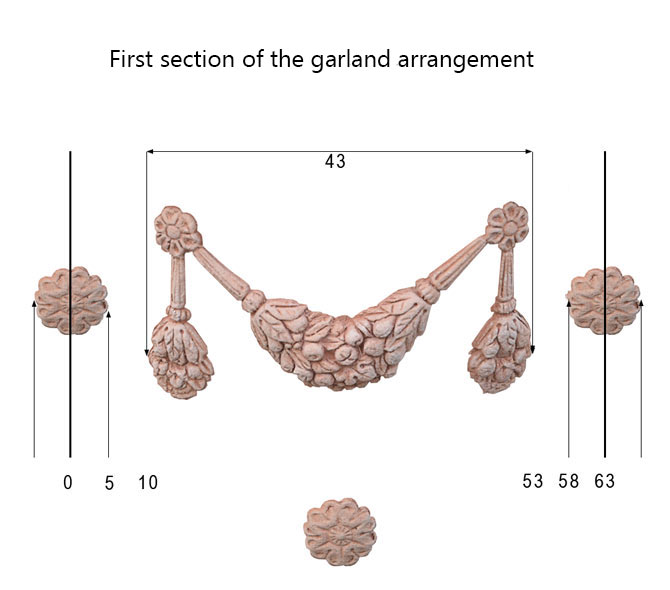
A Garland Vase is in most cases the embellished and sometimes baroque version of its smooth equivalent. This means that generally the design of
the new model is first studied in its smooth form and then its decorated variant is created.
This is due to statistical reasons of sales and market demand. The garland pot, although considered a luxury version, has less success than its smooth counterpart,
both because it is more expensive, but mainly because it is well-suited for traditional buildings, ancient farmhouses finished in stone,
with a Tuscan flavor.
The smooth vase is like a neutral-colored dress, it can be paired with anything, whether it is classic or modern, and this justifies
the success of sales. The garland version is mainly popular in Tuscany and Latium, while the export percentages leave no doubts about the effectiveness
of the design of the Classic Plain Vase, for exemple the Classic Rolled Rim pot.
That being said, what are the guidelines for placing a classic-type decoration on a festooned vase?
We know that a vase is composed of four architectural elements: the rim, the body, the belt (or more belts), and the base.
The belt, generally one in double-rimmed vases and sometimes two in larger vases, divides the body of the vase into two parts, which is the central part of
traditional vases, the rim and the base. The garland decoration differentiates the smooth version for the embellishment of the body of the vase, while
the rim and base remain unchanged.
The decorative elements for the garland pots are mainly festoons and roses. Sometimes, in very Baroque vases, leaves and heads can be added to embellish the top rim. In the classic garland pot, the decorative figure is composed of 3 roses and one festoon, with the roses placed at the vertices of a hypothetical triangle
The decorative elements are the feston or garland and the rose arranged along the length of the body in a plane, equidistant from
each other and from the boundaries of the area designated for them. The upper part of the body, above the waistband, features a
sequence of rose-garland-rose, while the lower part has a sequence of a single rose, placed at the bottom and centrally at the midpoint of the garland.
To better understand, let's give a numerical example. Let's take the upper part of a vase that, at the height of the central part of the first upper section of the body,
has a diameter of 60 centimeters and a distance of 30 cm between the lower part of the rim and the waistband. Unfolding the upper section of the body in length, we can approximate it to a flat surface of a rectangle with a height of 30 cm and a length equal to the circumference that has a diameter of 60 cm, or about 188 cm.
Usually, vases up to 90 or 100 centimeters in diameter are decorated with three festoons and six roses, arranged with three in the upper section and three in the lower section. It is a matter of dividing the 188 centimeters into 3 zones of about 63 centimeters and positioning the center of the first rose at centimeter 0, the second at centimeter 63, and the third at centimeter 126. The size of the roses and the festoon must be chosen so as not to be too close together but instead form a harmonious whole. We can calculate that a rose with a diameter of 10 centimeters leaves a space of 10 centimeters between the ends of the body section and that the same 5 centimeters must be present between the rose and the festoon.
The combination of the three roses generates the classic triangle pattern. The second and third sections are identical, and they need to be sequenced to achieve the development in the plane.
Very large vases, having a wide development, can also be made up of 4 or 5 sections, otherwise the festoon could become too long. This decision also depends on the type of definition and complexity of the festoon that we will mount, as well as the value we want to give to the object.

Unlike the 3 garlands 6 roses pattern, producers can decorate a garland pot in a baroque style, adding leaves to the lower section of the body, embellishing the belt and/or the upper edge, replacing the roses with a continuous garland or with heads. We will discuss this type of decoration in a separate article.

